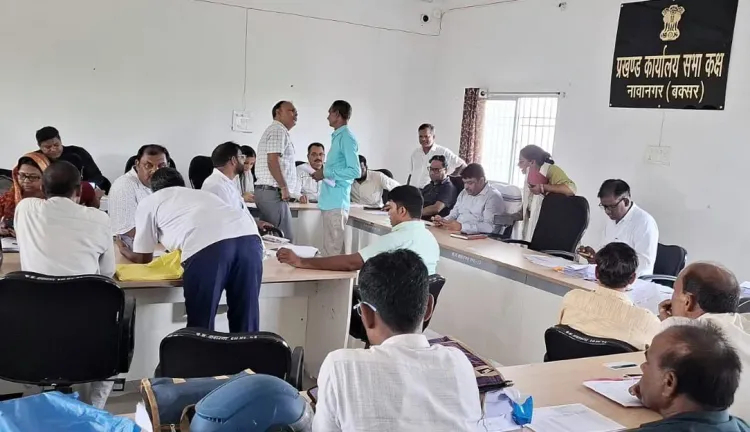What Did the Supreme Court Direct the Election Commission Regarding Voter Data in Bihar?

Synopsis
Key Takeaways
- The Supreme Court has mandated the ECI to upload data of omitted voters in Bihar.
- About 65 lakh voters are affected, with reasons for their exclusion to be provided.
- The information will be made searchable using EPIC numbers.
- Voters can claim inclusion through a specific form during the designated period.
- This order aims to bolster transparency and voter trust.
New Delhi, Aug 14 (NationPress) To enhance voter trust, the Supreme Court issued an interim order on Thursday, instructing the Election Commission of India (ECI) to publish district-wise information for approximately 65 lakh voters in Bihar who were excluded from the draft electoral rolls after the initial stage of the Special Intensive Revision (SIR).
A bench led by Justices Surya Kant and Joymalya Bagchi mandated that the details of these voters, whose enumeration forms were not submitted, be made available on official websites by Tuesday (August 19). This information should include reasons for exclusion such as death, permanent migration, duplication, or being untraceable.
The data must be searchable using EPIC (Electors Photo Identity Card) numbers on the websites of the District Electoral Officers and the Chief Electoral Officer of Bihar, as stated by the Justice Surya Kant-led bench.
Additionally, the Supreme Court directed the ECI to widely publicize the uploaded list through various media channels, including newspapers and social media.
The apex court also instructed the ECI to inform the public in their notices that those excluded and wishing to be included in the final list can submit their Aadhaar cards.
This directive came during the hearing of multiple petitions contesting the ECI's order issued on June 26 regarding SIR in Bihar.
The Association for Democratic Reforms (ADR) had filed an application with the Supreme Court urging the ECI to publish a constituency and booth-wise list of omitted voters along with the reasons for their exclusion, and to disclose the names of electors whose enumeration forms were “not recommended” by the Booth Level Officers (BLOs).
In its affidavit, the ECI opposed ADR’s request, asserting that the current legal framework under the Representation of the People Act, 1950, and the Registration of Electors Rules, 1960, does not require the publication of such a list.
The ECI clarified that it is not obliged to prepare or share a separate list of names not included in the draft electoral rolls or provide reasons for their exclusion.
Eligible voters whose names are missing can file Form 6 along with a declaration to claim inclusion in the draft electoral rolls during the claims period, which lasts from August 1 to September 1.
This process implies that the applicant is neither deceased nor permanently relocated, according to the ECI.
According to the ECI, the exclusion of a name from the draft rolls does not equate to removal from the electoral rolls. “The draft roll merely indicates that the duly filled enumeration form for current electors has been received during the enumeration phase,” it stated.










